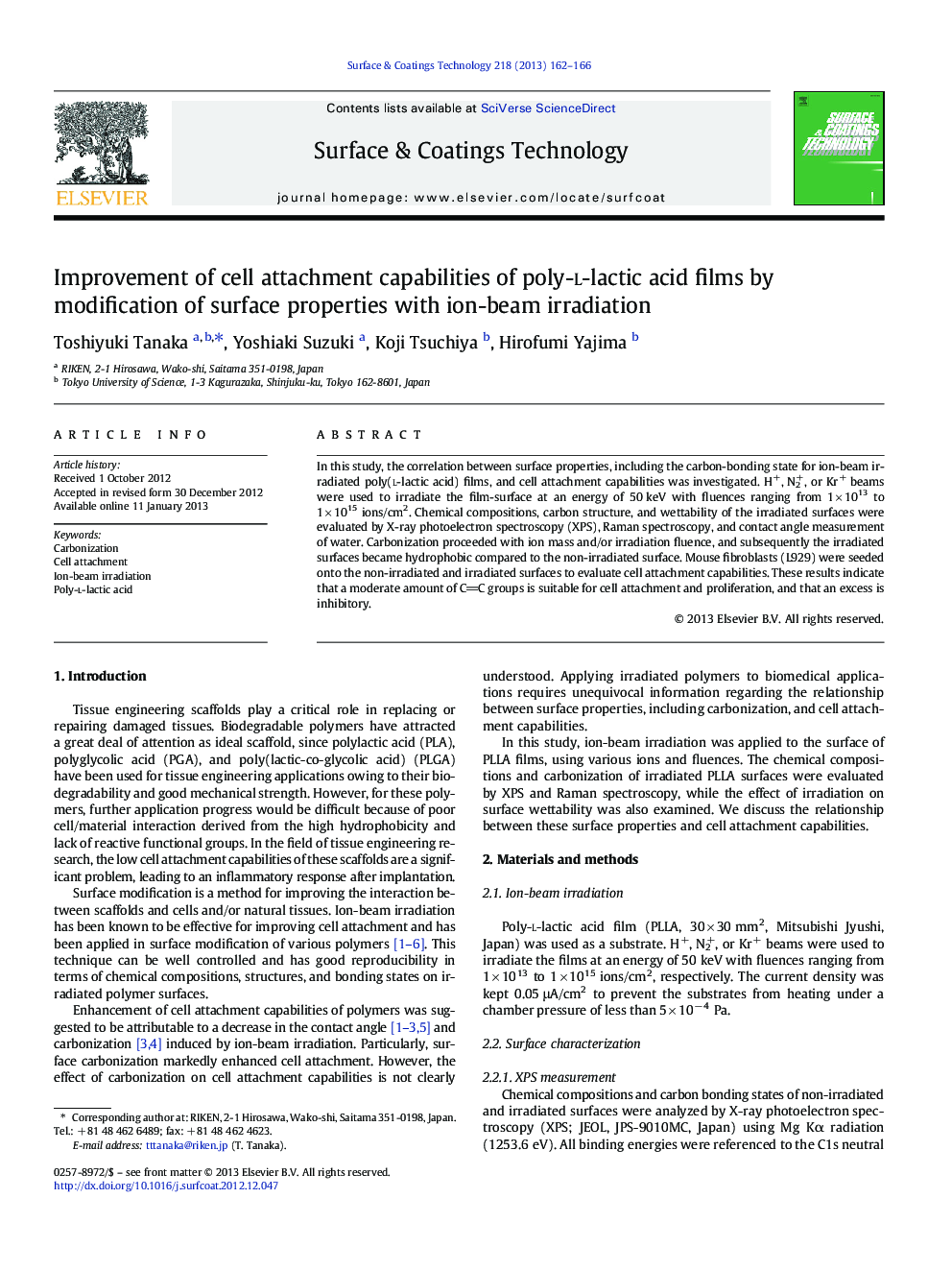| Article ID | Journal | Published Year | Pages | File Type |
|---|---|---|---|---|
| 1658184 | Surface and Coatings Technology | 2013 | 5 Pages |
In this study, the correlation between surface properties, including the carbon-bonding state for ion-beam irradiated poly(l-lactic acid) films, and cell attachment capabilities was investigated. H+, N2+, or Kr+ beams were used to irradiate the film-surface at an energy of 50 keV with fluences ranging from 1 × 1013 to 1 × 1015 ions/cm2. Chemical compositions, carbon structure, and wettability of the irradiated surfaces were evaluated by X-ray photoelectron spectroscopy (XPS), Raman spectroscopy, and contact angle measurement of water. Carbonization proceeded with ion mass and/or irradiation fluence, and subsequently the irradiated surfaces became hydrophobic compared to the non-irradiated surface. Mouse fibroblasts (L929) were seeded onto the non-irradiated and irradiated surfaces to evaluate cell attachment capabilities. These results indicate that a moderate amount of CC groups is suitable for cell attachment and proliferation, and that an excess is inhibitory.
► The amount of CC groups increased with ion mass and/or irradiation fluence. ► Graphitization occurs at greater amounts of CC groups. ► Cell attachment and proliferation are maximized at a moderate amount of CC groups. ► Cell attachment capabilities can be controlled by the amount of CC groups.
